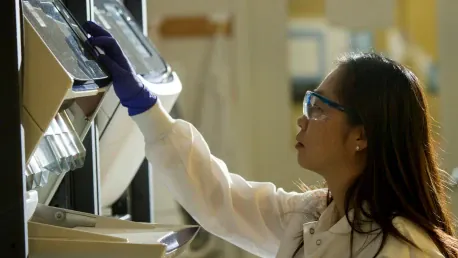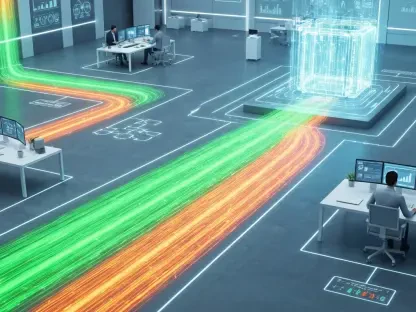Z Advanced Computing, Inc. (ZAC) has emerged as a significant player in the Biotech and Medical AI sector with its groundbreaking cognitive explainable-AI (CXAI) algorithms. Named among the top AI technologies globally by “Research and Markets,” ZAC’s proprietary Concept-Learning approach has taken the field by storm. A key highlight of ZAC’s technological prowess is its ability to train AI models with minimal data, often requiring fewer than ten training samples. This marks a substantial departure from traditional methods like Deep Convolutional Neural Networks (CNN), which typically demand vast amounts of data. This technological leap has been effectively demonstrated through collaborations with entities such as the US Air Force and Bosch, particularly in the realm of complex 3D image and object recognition from various angles.
Advancements in AI Technology
Dr. Bijan Tadayon, CEO of ZAC, stands by the unprecedented accuracy, robustness, and reliability of ZAC’s algorithms compared to conventional AI approaches, including Neural Networks, Deep CNN, ResNet, and GAN. ZAC’s innovative use of minimal data for training constitutes a transformative shift in AI model development. This has been made possible through the dedicated efforts of Dr. Saied Tadayon, who leads ZAC’s development team and boasts an extensive portfolio of 14 US patents. The innovative strength of ZAC’s technological portfolio is further underscored by an esteemed advisory board featuring distinguished figures such as Prof. David Lee, Nobel Laureate in Physics, and Prof. Gholam Peyman, MD, the inventor of LASIK eye surgery.
The use of ZAC’s CXAI in 3D image recognition, particularly with minimal training examples, has profound implications. Traditional AI models require extensive datasets to achieve a similar level of accuracy and reliability. ZAC’s capability to operate effectively with such limited data not only accelerates the training process but also reduces the computational resources needed. This efficiency is critical in various applications, including those involving intricate and variable data types such as medical imaging and satellite imagery.
Applications Across Multiple Industries
ZAC’s AI innovations have applications far beyond 3D imaging. The versatility of these models extends to autonomous vehicles, enhancing their ability to navigate with precision and safety. In the realm of satellite and aerial imagery, ZAC’s technology enhances the accuracy of image interpretation, crucial for areas such as climate monitoring and disaster management. The security and biometrics sector benefits from heightened accuracy in identifying faces and patterns, enhancing public safety and surveillance measures.
In the medical domain, ZAC’s CXAI capabilities are revolutionizing the interpretation of medical imagery and aiding in the discovery of new drugs. This reduces the time needed to analyze complex data, leading to faster and more accurate diagnostics and treatments. Similarly, the technology aids e-commerce by improving product recognition and recommendation systems. In the manufacturing sector, defect detection is streamlined, ensuring higher quality control and efficiency. Additionally, ZAC’s AI plays a pivotal role in smart city and home solutions, contributing to smarter, more intuitive living environments.
Future Perspectives
Dr. Bijan Tadayon, the CEO of ZAC, emphasizes the unique accuracy, robustness, and reliability of ZAC’s algorithms when compared to traditional AI methods like Neural Networks, Deep CNN, ResNet, and GAN. ZAC’s groundbreaking use of minimal data for training represents a major shift in AI model development. This innovation is led by Dr. Saied Tadayon, who heads ZAC’s development team and holds 14 US patents. The technological prowess of ZAC is further highlighted by its advisory board, which includes prominent figures like Nobel Laureate Prof. David Lee and Prof. Gholam Peyman, MD, the inventor of LASIK eye surgery.
ZAC’s CXAI technology’s application in 3D image recognition, especially with minimal training examples, is groundbreaking. Traditional AI models need vast datasets to achieve similar levels of accuracy and reliability. ZAC’s ability to function effectively with limited data quickens the training process and cuts down on computational resources. This is essential in applications involving complex data types such as medical imaging and satellite imagery.









